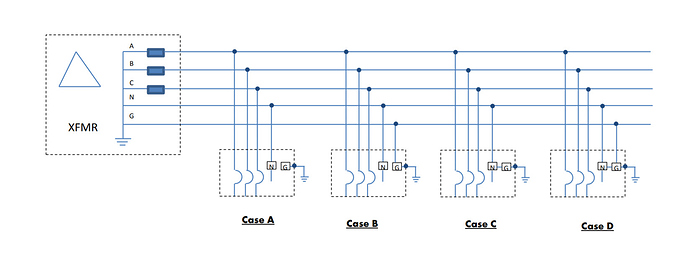QUESTION
In 3φ4W power system like 208/120V and 416/240V, G and N wire need to take care.
There are 4 connection cases between G and N wire as attached.
Please advise which one is practice connection and their pros and cons.
Any guideline or article that I can refer to ?
Please review the 4 cases:
REPLIES
waross
Case A is very poor practice. One of the purposes of grounding is to develop fault currents sufficient to trip the protective devices. In basic systems without ground fault interruption this would be the circuit breaker. Case A does not provide this protection.
Case B is the typical connection for sub panels in a building. This connection may be used when the transformer is consumer owned rather than utility owned.
Case C is the most common connection. The utility provides a ground connection at the transformer and there is a connection between the neutral and ground at the main service panel. This connection may also be used for sub panels located in another building.
Historically one conductor was used as both ground and neutral for large appliances in the US. This would be electric ranges and electric driers. This use is no longer code compliant.
Case D may be encountered when the connection between the utility transformer is underground. However this connection will often result in part of the neutral current flowing in the grounding conductor. For this reason this connection is avoided. The grounding conductor may be carried with the phase conductors to the panel, but then be not connected to the neutral.
SOURCE
https://www.eng-tips.com/viewthread.cfm?qid=414204
Above is a snippet.
